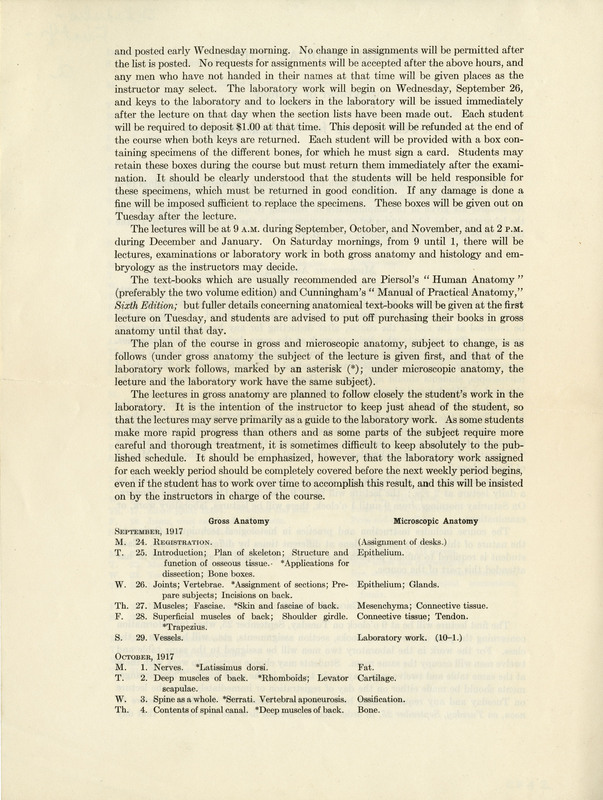Curriculum Changes
As the Medical School moved to new and more spacious quarters on the Longwood campus, the study of anatomy at Harvard began to change in significant ways. The second-year course was dropped in 1903 and would only be reintroduced—and briefly—after Thomas Dwight’s death. A Department of Comparative Anatomy (formerly the Department of Histology and Embryology) was created under Charles Sedgwick Minot in 1906. It was then combined with the Department of Anatomy in 1912, and so the first-year students received instruction in anatomy, comparative anatomy, histology, and human embryology, with one-half of the student’s time spent in the dissecting room, the other half in the histological and embryological laboratories. Each student was to make a dissection of just one side of the human body, with every member of the class dissecting the same part at the same time. Microscopic anatomy was also added to the regular course of instruction and became an increasingly important aspect of study.

